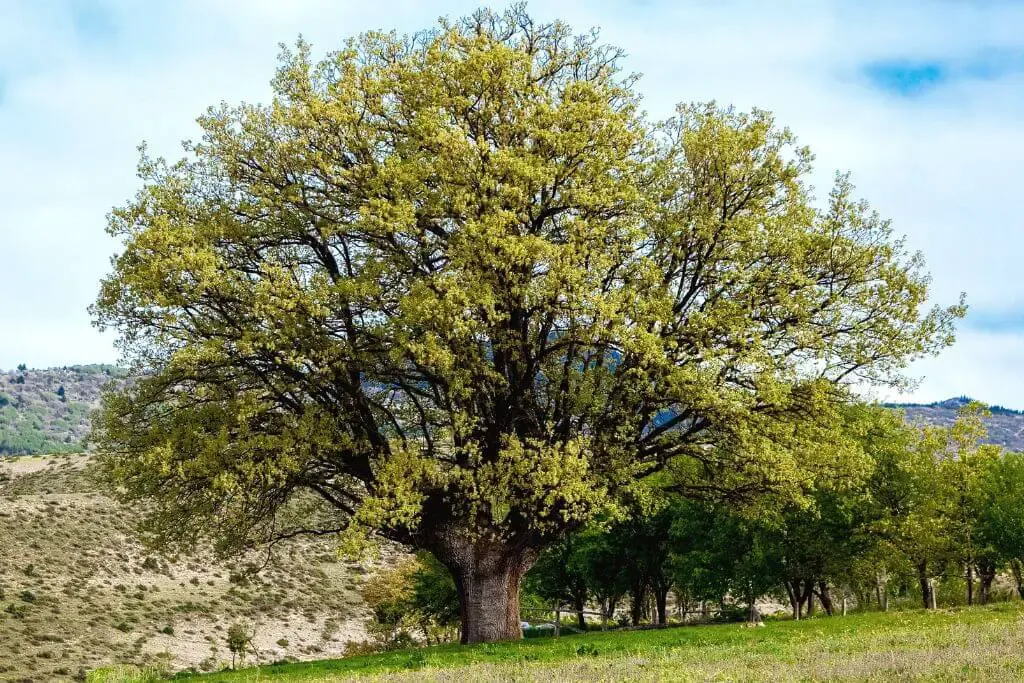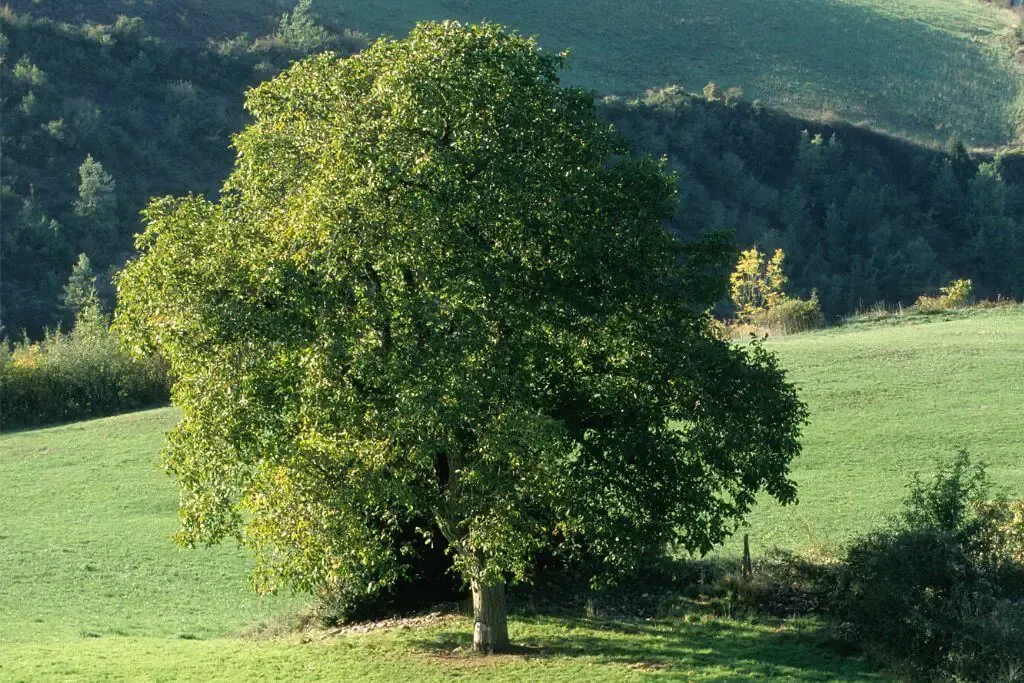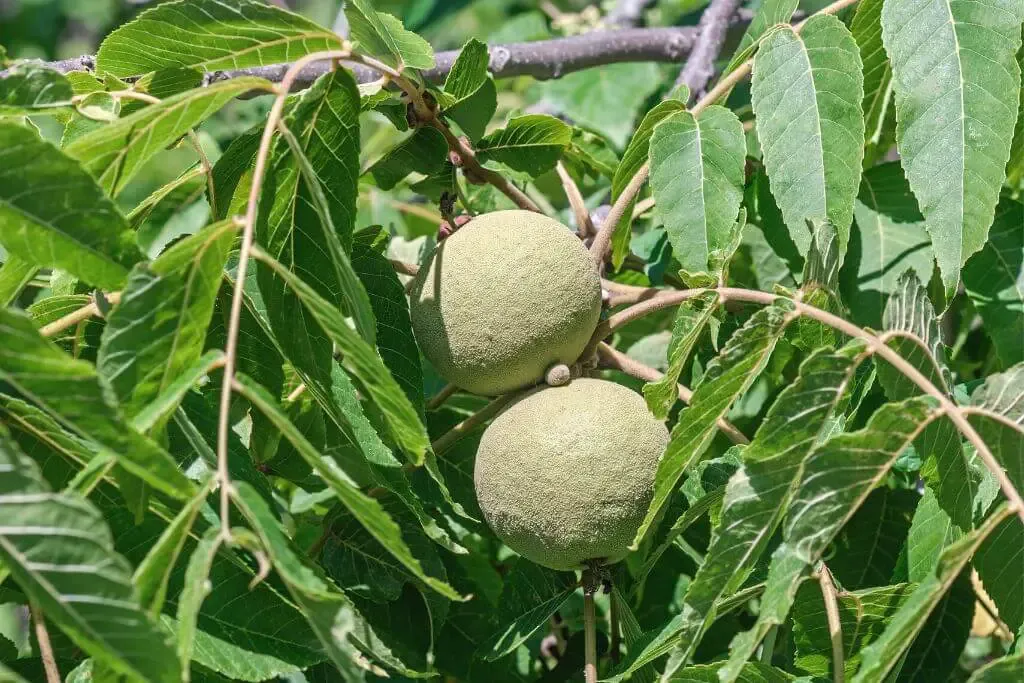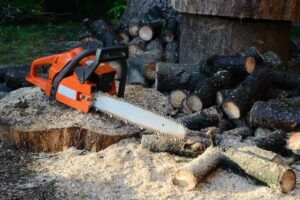
Have you considered investing in a walnut tree? Do you know you can make a good living selling walnut trees? Are you wondering how much a walnut tree is worth in your area?
A walnut tree is not only known for its nuts but also for its excellent dark wood. The American black walnut is one of the most sought-after trees for lumber.
Let’s consider the black walnut to find out how much is a walnut tree worth and determine whether it’s a worthy investment.
Table of Contents
What Is The Value of A Walnut Tree?
The lumber industry determines the worth of walnut trees. The demand for walnut trees outstrips the supply at the moment, thus creating a high market price for walnut lumber.
The following are reasons why most people are interested in walnut wood:
- Excellent for carving and turning
- Solid and durable
- Creates a beautiful finish
- Hard but not heavy
- It is resistant to decay and termites
- Stable and dense to resisting shock
- Easy to bent to create shapes
- Has a wide range of colors within the grain
What Makes a Walnut Tree Valuable?

There are numerous factors that are used to determine the value of black walnut trees. Since it is a native tree in the United States, its value is also in abundance.
If you live in an area dominated by the lumber industry, there is a high probability your black walnut trees are worth a lot.
The following are factors that determine the value of black walnut trees:
1. Size
The size of a black walnut tree is an essential factor to consider when determining its value. A bigger walnut tree will yield more lumber, thus increasing the profit margin.
Also, a high-quality black walnut tree of approximately 20 inches in diameter might be worth between $700 and $800. The value will be higher for exceptional quality trees.
The tree’s diameter is measured using a Biltmore stick from the trunk up to the lowest branch. With those measurements, the total board feet can be calculated, along with the tonnage and cubic feet of wood to be sold.
2. Location
The area where your black walnut trees grow plays a pivotal role in determining their overall value.
Your trees’ market value will be higher if they grow in an area known for producing exceptional lumber.
The most valuable trees are those found within the Midwest area, especially those growing in Wisconsin, Illinois, Michigan, and Ohio. This is due to the high demand for black walnut wood in these states.
3. Veneer Rating
This is the rating used to determine the quality of a black walnut tree when the wood is cut into thin strips. The presence or absence of blemishes will determine your tree’s veneer rating.
Knots, cracks, metal embedded, and branch removal causes scars. Wood that is clear of defects will be graded highest and command a higher price.
A healthy tree with no blemishes and a trunk diameter of 18″ would be worth approximately $700, while one with a trunk diameter of 25″ would be worth $1200 or $1400.
Grading of walnut trees is as follows:
- Clear wood that is free of knots, cracks, or blemishes falls under Grade A
- Wood that is free of knots but with minor damage or blemishes falls under Grade B
- A tree with some tiny knots falls under Grade C
- Wood with several knots or more damage belongs to Grade D
- A tree with lots of knots, but some areas lack knots, belongs to Grade 1
- A tree with many large knots but a small amount of blemishes falls under Grade 2
4. Time
A more mature walnut tree will be worth more than a younger tree of the same size and quality. To make a profit, you need to start grooming your walnut trees while they are young. This is because it takes about 30 years for walnut trees to reach maturity.
5. Climate
The climate of the region where your trees grow significantly impacts their value. A warmer, more humid environment will produce a heavier crop than a cold and dry area.
In addition, suitable climatic conditions help your walnut trees grow faster and produce higher-quality lumber.
Is Walnut Planting a Good Investment?
There is a high demand for lumber obtained from walnut trees today.
Therefore, planting a walnut tree is a good investment that can help you earn significant profits over time.

The following are the benefits of planting black walnut trees:
Sell Your Nuts
A black walnut tree produces nuts in abundance. The nuts can be harvested late in the summer through October. The walnuts have a good market value.
A healthy walnut tree is capable of producing 350lbs of nuts annually. With 20 healthy walnut trees, you can be sure of a comfortable annual income.
You also can use walnuts to make walnut oil, which is very useful in cooking. Walnut oil is also an excellent alternative to olive oil, as it has less saturated fat and more polyunsaturated fat than olive oil.
It is helpful for hair and skin health and superb in baked goods. Because it is all-natural, walnut oil has a heavenly sweet smell that you can use to refresh your house.
Lumber Uses
The wood obtained from a black walnut tree is valued for its hue and utility. It is highly desired for furniture, gun stocks, knife handles, and inlays.
The wood has a luxurious feel described as “buttery smooth.” Black walnut wood is also perfect for interior sheeting, flooring, and veneers. These characteristics make black walnut trees a valuable source of timber.
The demand for this type of lumber has not waned, although the trees are slowly dwindling in number due to urban sprawl and harvest by timber companies.
Selling the lumber obtained from walnut trees by the board foot can bring in a significant amount of funds for you. Twenty feet of a board of one-inch thick walnut lumber is approximately worth $550.
The timber sells best when it is mature and ready to be harvested, as the color of the wood is more intense and pronounced by then.
If you do not have the patience to wait for your walnut trees to be fully grown, you can help them mature faster by removing competing plants and pruning branches blocking the sun from reaching the trees’ crowns.
How To Tell How Old A Walnut Tree Is
Knowing the age of a walnut tree helps determine its value and the quality of its lumber. It takes 30 years for a walnut tree to grow to full maturity. However, a walnut tree can be harvested early in case of damage.
You can determine the age of your walnut tree by counting the rings. Wood is composed of rings made up of vascular cambium tissues.
Each ring shows growth, so counting the number of growth rings on your walnut tree can help you determine its age.
However, it can be hard to count the growth rings on your tree if it’s still growing. In such instances, it will require you to take a core sample, which requires some skill and effort.
You can use the following simple steps to estimate how old your walnut tree is:
- Using a fabric measuring tape, measure the tree’s trunk from the ground to 4 1/2 feet.
- Wrap the tape measure around the tree at this height.
- Record the measurement, which is the tree’s circumference.
- Subtract one and a half inches from the circumference measurement. This is because walnut trees have thick barks, which should be excluded from your calculation.
- Convert the circumference calculation into centimeters if you took all the measurements in inches. This will make the calculation easier.
- Walnut trees grow about 1/2 to 3/4 of an inch yearly, which translates to 1.3 centimeters to 1.9 centimeters. Use the median value of 1.6 centimeters as the average.
- Make your age calculation by dividing the circumference by 1/6 to get the approximate age of your tree.
Conclusion
Planting a walnut tree is profitable and can be considered a sustainable farming activity.
You can increase or decrease the value of your tree by pruning and fertilizing it. It also helps to know how old your tree is, as this will help you know whether it is fully grown and ready to be harvested.
You need to plant high-quality walnut trees to maximize your wood’s profit and quality. Planting a walnut tree can be considered an investment, as the wood will be worth more in the future when the tree matures.





![How To Start A Woodworking Business [Ultimate Guide] How To Start A Woodworking Business [Ultimate Guide]](https://handykeen.b-cdn.net/wp-content/uploads/2021/10/woodworking-business-1-300x200.jpg)
![9 Best Pole Saws of 2023 [Ultimate Guide] 9 Best Pole Saws of 2023 [Ultimate Guide]](https://handykeen.b-cdn.net/wp-content/uploads/2021/03/best-pole-saw-300x200.jpg)